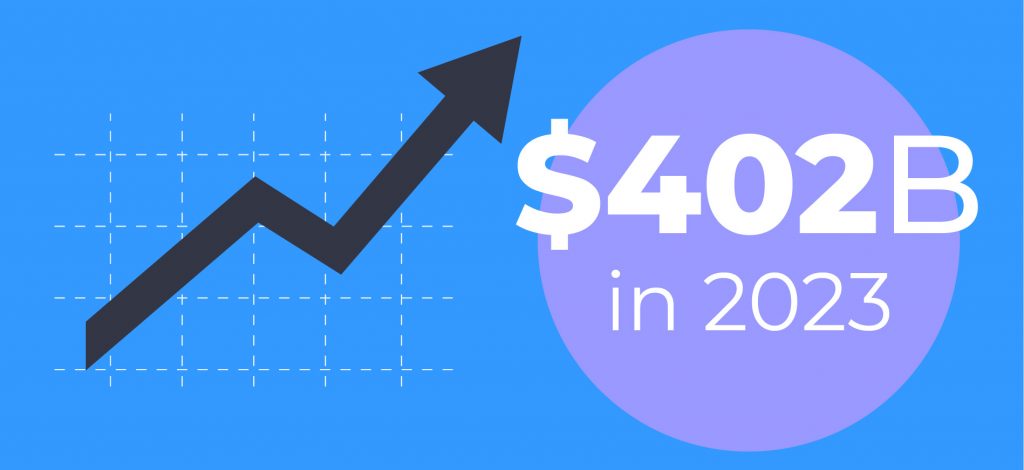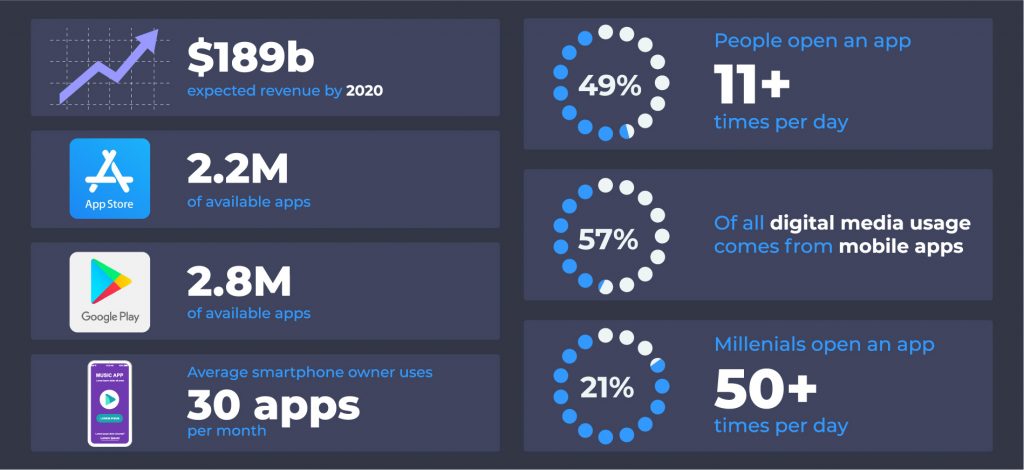Despite the convulsive days that people and markets are currently going through, we have good news. 45.12% of the world’s population owns a smartphone. This translates into 3.5 million smartphone users across the world that keep downloading and using apps. Moreover, app usage and smartphone penetration are still growing at a steady rate, without any signs of slowing down in the near future. In fact, according to eMarketer, worldwide mobile ad spending will hit $402 billion in 2023. That’s why publishers shouldn’t miss the opportunity.

That the average number of apps used continues to increase is excellent news. App users visit, on average, 3 times more pages per session than mobile web users. This means that the engagement rate is higher in-app compared to web. Mainly because the app user experience is superior to mobile web for content, as well as for advertising. In fact, eMarketer predicts this year 85% of mobile ad dollars will be spent on in-app inventory and many US media buyers are already shifting their spend.
In the US, the average American checks their phone every 12 minutes, 10% of people do it once every four minutes and 90% of mobile time is spent on apps. These are powerful reasons for the in-app advertising activity to keep growing, reaching $77 billion in the US over the past year, as estimated by eMarketer.
Some relevant figures

- Mobile apps are expected to generate $189 billion in revenue by 2020.
- The Apple App Store has 2.2 million apps available for download.
- There are 2.8 million apps available for download on the Google Play Store.
- 21% of Millennials open an app 50+ times per day.
- 49% of people open an app 11+ times each day.
- 57% of all digital media usage comes from mobile apps.
- The average smartphone owner uses 30 apps each month.
Although coronavirus might affect these numbers, it seems that the shift from offline to online will probably reinforce the growth of in-app advertising. Though, it has already become more relevant than mobile web.
Leveraging in-app data while improving transparency and viewability
Amongst other factors, the IAB launching its Open Measurement SDK. Why? Because facilitating viewability and verification measurement in-app, will accelerate mobile app ad spending. Especially if we consider that mobile apps are relatively immune to ad blocking. Also, since in-app ad targeting can leverage device IDs, mobile apps are a powerful resource to smooth the impact of data privacy limitations. They are the perfect environment for personalized and even local or hyper-local advertising too. No to mention the fact that mobile apps provide a new path for publishers to diversify their revenue streams. This is because they offer more opportunities for advertising, but also a channel for subscriptions, in-app purchases, e-commerce, etc.
Now that the industry is putting all the efforts into improving transparency and viewability, advertisers and marketers will focus more on a direct relationship with publishers. However, they should prioritize their mobile app presence. This also means: leveraging native and in-app video formats and using mobile header bidding for video ad inventory. This way, they would be able to optimize monetization strategies and focus on content development and inventory quality controls.
Based on this, it makes sense to think that the time has come for mobile in-app advertising to take over the digital landscape and this is an opportunity that publishers should definitely take advantage of.
Why is mobile in-app important?
Experts expect mobile ad spend to reach $402 billion by 2023. This astounding number shows the potential that mobile apps have in the publishing and ad industry.
How can the industry improve transparency in mobile in-app ads?
A good way the industry can improve viewability and transparency is by having marketers focusing on a more direct relationship with publishers.